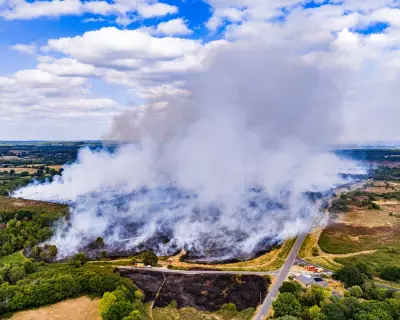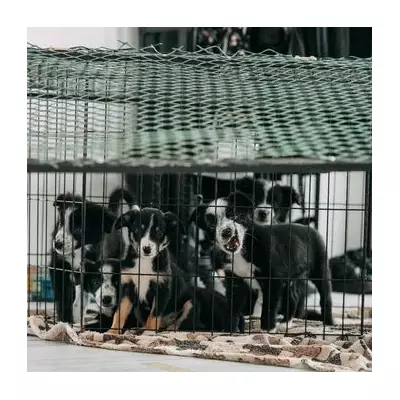
Veterinary professionals across Britain are issuing an urgent safety alert to dog owners after a devastating incident that claimed the life of a healthy Staffordshire Bull Terrier. The tragedy occurred during what many would consider safe conditions - an evening walk in warm weather.
The Hidden Danger of Warm Evenings
Many pet owners believe that avoiding midday heat makes evening walks completely safe, but veterinary surgeons are warning that this misconception can have fatal consequences. The recent case involved a two-year-old Staffordshire Bull Terrier named Nala who collapsed and died after a walk in 24°C weather.
"People think if the sun isn't blazing overhead, their dog is safe," explained a leading veterinary surgeon. "But the ground retains heat for hours after peak temperatures, and dogs' bodies work very differently from ours."
Why Dogs Overheat So Quickly
Unlike humans, dogs have limited ability to cool themselves. Their primary cooling method involves panting and sweating through their paw pads, which becomes dramatically less effective in warm conditions.
- Dogs can develop heatstroke in temperatures as low as 20°C
- Pavement and asphalt can remain dangerously hot long after air temperatures drop
- Brachycephalic (short-nosed) breeds and thick-coated dogs are at highest risk
- Young, energetic dogs may not show signs of distress until it's too late
Recognising the Warning Signs
Veterinary experts emphasise that early recognition of heatstroke symptoms can mean the difference between life and death. Key warning signs include:
- Excessive panting that doesn't settle when resting
- Bright red tongue or gums
- Thick, sticky saliva
- Lethargy or confusion
- Vomiting or diarrhoea
- Collapse or loss of consciousness
Emergency Measures That Could Save Your Dog's Life
If you suspect your dog is suffering from heatstroke, immediate action is crucial. Veterinary professionals recommend:
Move your dog to a cool area immediately and offer small amounts of water. Use cool (not cold) water to wet their coat, particularly focusing on the neck, armpits and between hind legs. Avoid covering them with wet towels as this can trap heat.
Most importantly, seek veterinary attention immediately even if your dog appears to recover. Internal damage can continue progressing after external symptoms improve.
Preventing Future Tragedies
The veterinary community is urging dog owners to adopt new safety habits during warm weather:
Test pavement temperatures with the back of your hand - if it's too hot for you to hold for five seconds, it's too hot for your dog's paws.
Adjust walking times to early morning when surfaces are coolest, and keep walks shorter during warm spells.
Provide constant access to fresh water and cooling options like damp towels or cooling mats at home.
As one veterinary surgeon poignantly stated: "It's better to miss one walk than to lose a beloved family member. When in doubt, don't go out."





